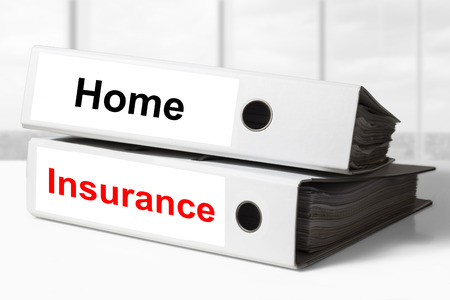Understanding Types of Insurance Claims
When it comes to filing an insurance claim in the United States, its important to understand that there are several different types of insurance policies—and each one has its own claims process. The four most common types of insurance claims Americans file are auto, home, health, and renters insurance. Knowing the basics about each type can help you feel more confident if you ever need to file a claim.
Common Types of Insurance Claims in the U.S.
| Insurance Type | What It Covers | Typical Claims Process |
|---|---|---|
| Auto Insurance | Vehicle damage, theft, or liability for injuries/damages after an accident | Report the incident to your insurer, provide photos and a police report (if needed), get an estimate, and work with a claims adjuster |
| Homeowners Insurance | Damage to your home or belongings due to events like fire, storms, or theft | Notify your insurer promptly, document damages with photos/receipts, meet with an adjuster, and review the settlement offer |
| Health Insurance | Medical expenses such as doctor visits, hospital stays, and prescriptions | Your healthcare provider may file the claim directly, or you might need to submit paperwork; you’ll receive an Explanation of Benefits (EOB) |
| Renters Insurance | Personal property loss or damage in a rented apartment or house | File a police report if necessary, notify your insurer, provide proof of loss (photos/receipts), and communicate with the claims adjuster |
Auto Insurance Claims
If you get into a car accident or your car is stolen in the U.S., youll usually start by calling your insurance company’s claims department. Having details like the other driver’s information and any police reports will make the process smoother. The insurance company might send out an adjuster to assess the damage before approving repairs or reimbursement.
Homeowners Insurance Claims
If your home is damaged by something like a storm or fire, let your insurer know as soon as possible. Take lots of photos and keep records of all communications. An adjuster will likely visit your home to evaluate the damage and determine how much your policy will cover.
Health Insurance Claims
Most health insurance claims in the U.S. are handled directly between your healthcare provider and your insurance company. However, sometimes youll need to submit paperwork yourself—especially for out-of-network services. After processing, youll receive an Explanation of Benefits (EOB) showing what was covered and what you owe.
Renters Insurance Claims
If youre renting and something happens to your personal property—like theft or water damage—file a claim with your renters insurance provider. Be ready to show proof of ownership for lost items (like receipts or photos). Your insurer will guide you through their specific process.
2. Gathering Essential Information and Documentation
Before you file an insurance claim in the United States, it’s important to gather all the essential information and documents. Having these items ready can make the process smoother and help your claim get processed faster. Below is a guide on what you should collect before contacting your insurance company.
Key Information You’ll Need
Insurance companies need specific details to verify your policy and understand your situation. Here are the basics:
- Policy Number: Find this on your insurance card or documents. This helps the company quickly locate your coverage details.
- Date and Time of Incident: Note when the incident happened as accurately as possible.
- Description of What Happened: Write a clear, step-by-step account of the event that caused the loss or damage.
- Contact Information: Include your phone number, email, and address, as well as contact info for any other parties involved.
Essential Documents to Gather
You’ll need to provide documents that back up your claim. Here’s a helpful table outlining what to collect based on common types of claims:
| Type of Claim | Documents Needed |
|---|---|
| Auto Insurance | Driver’s license, vehicle registration, photos of damages, police report (if applicable), repair estimates, receipts for repairs |
| Homeowners/Renters Insurance | Photos of damaged property, inventory list, receipts for valuable items, police or fire department report (if applicable) |
| Health Insurance | Medical bills, doctor’s reports, explanation of benefits (EOB), prescription receipts |
| Travel Insurance | Itinerary copies, proof of trip cancellation (doctor’s note, employer letter), receipts for expenses, police report (if lost/stolen items) |
Tips for Gathering Evidence
- Take Photos: Use your smartphone to take clear pictures of any damage or injuries from multiple angles.
- Keep Receipts: Save receipts for any repairs or replacements you have to make because of the incident.
- Create a List: Write down a detailed list of everything affected by the incident—this helps when claiming stolen or damaged items.
- Ask for Reports: If police or emergency services were involved, request a copy of their official report.
Why Preparation Matters
The more organized you are before filing a claim, the easier it will be to explain your case and provide proof when asked. This preparation also reduces delays in processing your claim and increases your chances of getting reimbursed fully and quickly.
![]()
3. Initiating Your Insurance Claim
How to File Your Insurance Claim
Once youve gathered all the necessary information, its time to start your insurance claim. In the United States, most insurance companies offer several convenient ways to file a claim. Here are the most common methods:
| Method | Description | Best For |
|---|---|---|
| Online | Most insurers have secure online portals or mobile apps. You can log in, provide details, upload documents and photos, and track your claim status. | If you prefer a quick, paperless process and want to check updates anytime. |
| By Phone | You can call the customer service or claims number found on your insurance card or the company’s website. An agent will guide you through the process step by step. | If you like speaking directly with someone or if your claim is urgent or complicated. |
| Through an Agent | Your local insurance agent can help you fill out forms, explain coverage, and submit your claim on your behalf. | If you value personal service or need help understanding your policy. |
Tips for Effective Communication with Your Insurance Provider
- Be clear and honest: Provide accurate details about what happened, including dates, locations, and any supporting evidence.
- Stay organized: Keep a record of all conversations, emails, and documents related to your claim. Write down names of representatives you speak with and save confirmation numbers.
- Respond promptly: Answer calls or emails from your insurer quickly. Delays in communication can slow down your claim process.
- Ask questions: If you’re unsure about anything, don’t hesitate to ask for clarification. Understanding next steps and timelines can reduce stress.
- Follow up regularly: If you haven’t heard back within the timeframe promised, contact your provider to check on your claim’s status.
Common Information You’ll Need When Filing a Claim
- Your policy number
- Date and details of the incident (accident, loss, damage)
- Description of what happened
- Names and contact information of involved parties or witnesses (if applicable)
- Photos, receipts, repair estimates, or police reports (if available)
Pro Tip: Use Your Insurer’s Mobile App
If your insurance company has a mobile app, consider using it to file your claim. Many apps allow you to take photos of damages and upload them instantly—making the process even faster!
4. Cooperating With the Claims Adjuster
Understanding the Claims Adjuster’s Role
After you file your insurance claim, you’ll likely be contacted by a claims adjuster. This person works for your insurance company and is responsible for evaluating your claim to determine how much should be paid out. The adjuster will review the details of your situation, inspect any damages, and ask questions to understand what happened. It’s important to remember that the adjuster’s job is to be fair and thorough, but they also represent the insurer’s interests.
What to Expect During Inspections or Interviews
The claims process often involves an inspection or interview. Here’s what you might experience:
| Step | What Happens |
|---|---|
| Initial Contact | The adjuster will call or email you to introduce themselves and schedule a visit if needed. |
| Inspection | If property damage is involved (like in auto or home claims), the adjuster may visit the site to assess the loss and take photos. |
| Interview/Questions | You’ll likely be asked about the events leading up to the claim. Be honest and provide clear details. |
| Documentation Review | The adjuster will look over documents you submit, such as repair estimates, police reports, or medical bills. |
Tips for a Smooth Evaluation Process
- Be Prepared: Have all relevant documents ready, like photos of damage, receipts, and any reports filed with authorities.
- Be Honest: Give accurate information. Exaggerating or withholding facts can delay your claim or even result in denial.
- Ask Questions: If you’re unsure about anything, ask your adjuster for clarification. They’re there to help guide you through the process.
- Keep Records: Write down names, dates, and what was discussed in every conversation with the adjuster.
- Follow Up: If you haven’t heard back within a reasonable time, reach out politely for an update.
How to Communicate Effectively With Your Adjuster
Clear communication is key. If possible, communicate via email so there’s a written record. Always remain polite and patient—even if you’re frustrated with delays. Remember, working together helps ensure your claim moves forward smoothly.
5. Navigating the Resolution Process
How Claim Settlements Work
After you file your insurance claim, your insurance company will review all the documents and evidence you provided. This process includes checking your policy details, investigating the incident, and possibly sending an adjuster to assess damages. Once everything is reviewed, the insurer will decide how much money (if any) they’ll pay out for your claim.
Typical Steps in the Settlement Process
| Step | Description |
|---|---|
| Initial Review | The insurer checks your policy and claim details. |
| Investigation | An adjuster may inspect damages or ask for more info. |
| Settlement Offer | The insurer tells you how much they’ll pay. |
| Payout or Dispute | You accept the offer, or discuss if you disagree. |
If You Disagree with the Outcome
If you don’t agree with the settlement amount or if your claim gets denied, don’t panic. You have options:
- Ask for Clarification: Contact your claims adjuster for an explanation of their decision.
- Provide Additional Evidence: Gather more photos, receipts, or expert opinions to support your case.
- Negotiate: You can discuss the payout and try to negotiate a higher amount.
- Request a Supervisor Review: Ask for a manager to take another look at your claim.
Your Options if a Claim Is Denied
| Option | What to Do | Who to Contact |
|---|---|---|
| Appeal the Decision | Submit a written appeal with supporting documents. | Your insurance company’s appeals department. |
| Mediation/Arbitration | A neutral third party helps settle disagreements. | Your state’s Department of Insurance or an independent mediator/arbitrator. |
| File a Complaint | If you believe you were treated unfairly, file a complaint. | Your state’s Department of Insurance website. |
| Legal Action | If all else fails, consider consulting an attorney. | A qualified insurance attorney in your state. |
Tips for Negotiating Your Payout or Appealing a Denial
- Stay Organized: Keep copies of all correspondence and paperwork related to your claim.
- Be Clear and Concise: Explain why you think the decision should be reconsidered and include evidence to back up your position.
- Know Your Policy: Reference specific sections of your policy that support your argument.
- Get Help if Needed: Don’t hesitate to seek advice from consumer protection agencies or legal professionals familiar with U.S. insurance practices.


